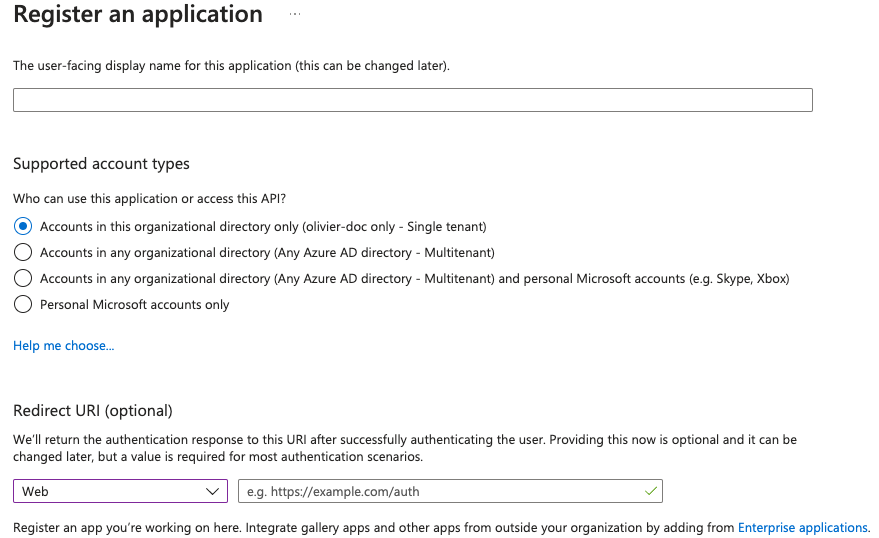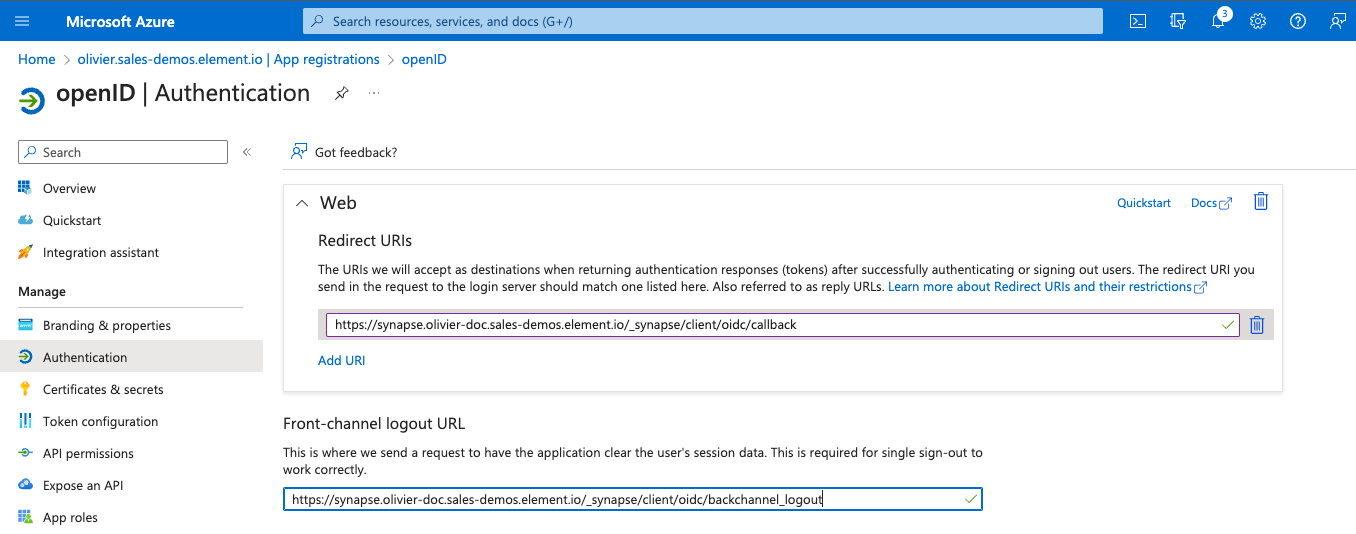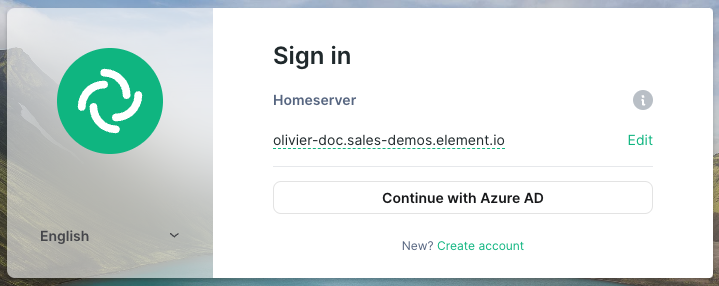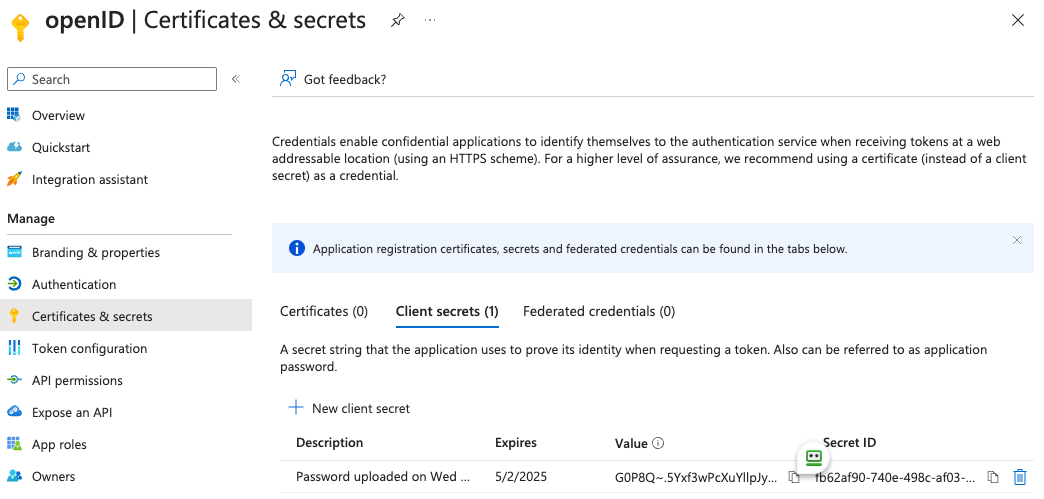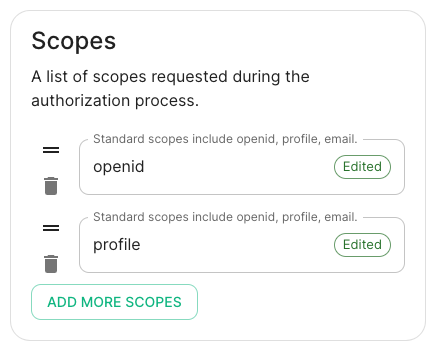Synapse Section: Delegated Auth
Specific Examples
LDAP on Windows AD
In the installer, set the following fields:
-
Base: the distinguished name of the root level Org Unit in your LDAP directory. The distinguished name can be displayed by selectingView/Advanced Featuresin the Active Directory console and then, right-clicking on the object, selectingProperties/Attributes Editor.
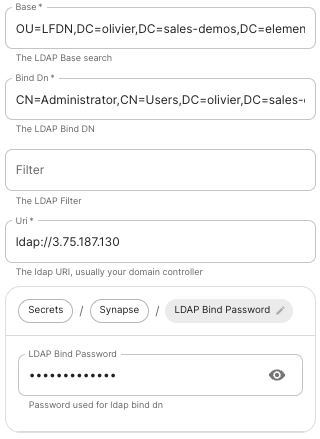
-
Bind Dn: the distinguished name of the LDAP account with read access. -
Filter: an LDAP filter to filter out objects under the LDAP Base DN. -
Uri: the URI of your LDAP server. (often your Domain Controller) can pass inldaps://for SSL connectivity. The following are the typical ports for Windows AD LDAP servers:-
ldap://ServerName:389 -
ldaps://ServerName:636
-
-
LDAP Bind Password: the password of the AD account with read access.
OpenID on Microsoft Azure
Before setting up the installer, you have to configure Microsoft Azure Active Directory.
Set up Microsoft Azure Active Directory
- You need to create an
App registration. - You have to select
Redirect URI (optional)and set it to https://matrix.your-domain.com/_synapse/client/oidc/callback
For the bridge to be able to operate correctly, navigate to API permissions, add Microsoft Graph APIs, choose Delegated Permissions and add
- openid
- profile
Remember to grant the admin consent for those.
To setup the installer, you'll need
- the
Application (client) ID - the
Directory (tenant) ID - a secret generated from
Certificates & secretson the app.
Configure the installer
Add an OIDC provider in the 'Synapse' configuration after enabling Delegated Auth and set the following fields in the installer:
-
Allow Existing Users: if checked, it allows a user logging in via OIDC to match a pre-existing account instead of failing. This could be used if switching from password logins to OIDC. -
Authorization Endpoint: the oauth2 authorization endpoint. Required if provider discovery is disabled. https://login.microsoftonline.com/<Directory (tenant) ID>/oauth2/v2.0/authorize -
Backchannel Logout Enabled: Synapse supports receiving OpenID Connect Back-Channel Logout notifications. This lets the OpenID Connect Provider notify Synapse when a user logs out, so that Synapse can end that user session. This property has to bet set tohttps://your-domain/_synapse/client/oidc/backchannel_logoutin your identity provider -
Client Auth Method: auth method to use when exchanging the token. Set it toClient Secret Postor any method supported by your Idp -
Client ID: yourApplication (client) ID -
Discover: enable/disable the use of the OIDC discovery mechanism to discover endpoints -
Idp Brand: an optional brand for this identity provider, allowing clients to style the login flow according to the identity provider in question -
Idp ID: a string identifying your identity provider in your configuration -
Idp Name: A user-facing name for this identity provider, which is used to offer the user a choice of login mechanisms in the Element UI. In the screenshot bellow,Idp Nameis set toAzure AD
-
Issuer: the OIDC issuer. Used to validate tokens and (if discovery is enabled) to discover the provider's endpoints https://login.microsoftonline.com/<Directory (tenant) ID>/v2.0 -
Token Endpoint: the oauth2 authorization endpoint. Required if provider discovery is disabled. -
Client Secret: your secret value defined under "Certificates and secrets"
-
Scopes: add every scope on a different line
-
User Mapping Provider: Configuration for how attributes returned from a OIDC provider are mapped onto a matrix user.
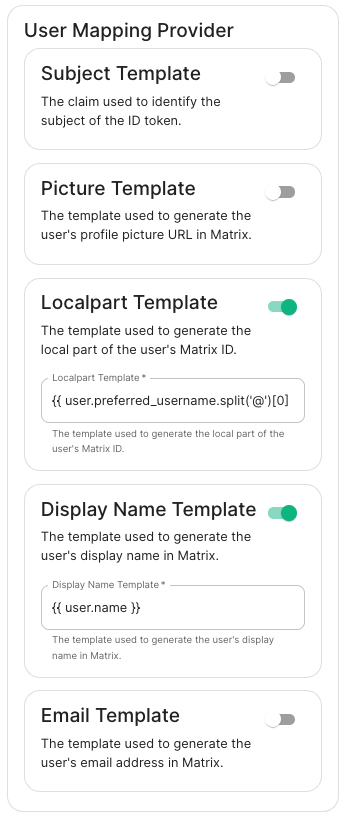
-
Localpart Template: Jinja2 template for the localpart of the MXID. Set it to{{ user.preferred_username.split('@')[0] }}for Azure AD -
Display Name Template: Jinja2 template for the display name to set on first login. If unset, no displayname will be set. Set it to{{ user.name }}for Azure AD
Other configurations are documented here.
-


